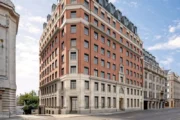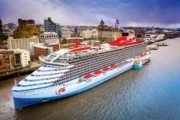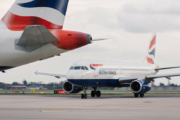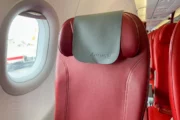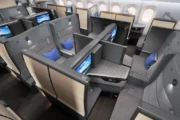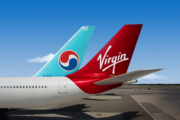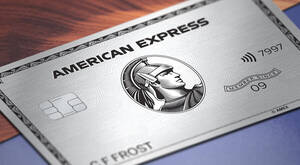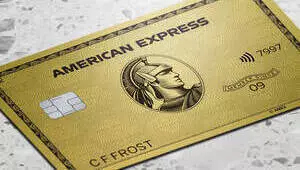-
@MichaelC – picking up on your comment in a different thread re eating in Beijing, the joy is that one can eat incredibly well there at seriously modest cost. There’s also such a variety which bears no resemblance to the UK version of Chinese food – you won’t find prawn toast, seaweed and spring rolls are rare. I hope the concierge at the Regent hasn’t changed – she is very charming, completely mad but the best connected, down to earth helpful person you could ever hope to come across.
Within a few minutes walk of the Regent there’s a restaurant I think called Xiulan Xiaoguan more or less opposite the Peninsula – it has a huge red sign with Chinese characters above the door and lanterns either side of the door, plus fish tanks just inside the door. The décor, recently refurbished, is very basic but the food is excellent. If you like fish or vongole, you are in the right place, but they have everything. Even youngsters who don’t like vegetables will fall for the green beans with minced pork and all variety of aubergine dishes that are to be found here and indeed everywhere. Ask for the full menu if they give you a short menu for foreigners!
In the same small row of shops, there’s also an archway with another good restaurant in a courtyard – maybe called Najia Garden? Also in this row is a wine shop (although the one round the corner nearish the metro entrance opposite the Regent is bigger/better) and you can take this to restaurants.
I’m not a fan of eating in malls, but I recognise that it’s the norm in Asia. Inside the APM Mall (less than 10 mins walk) a true temple to capitalism there are lots of restaurants but Grandma’s Home (or maybe Kitchen) is a legend and absolutely ideal for hungry youngsters. It’s always packed and you will have to queue (by taking a ticket or scanning QR code), but it moves quickly as people eat and leave immediately, people eat quite early so quieter from about 8. It’s busy because it’s cheap and really good.
For a treat, five minutes walk from the Regent in the opposite direction to the Peninsula, Duck de Chine is very civilised for lunch or dinner, something of a contrast to most restaurants that are inevitably more crowded/busy. Not cheap, but a lovely setting and great Beijing duck. I don’t rate the competing top end duck place, Dadong.
If you do take any of the Beijing Postcard trips, near their office (good house cocktail after the tour) De Yuan Roast Duck Restaurant is just great and inexpensive. For what it’s worth, all the duck restaurants serve lots of other food.
We particularly like Yunnanese food and near the Lama Temple there’s a fairly well known restaurant called the Dali Courtyard. It is good and it’s a nice setting, but it’s become a bit too well known by Americans and expensive. However, on the bigger alley, a few meters away there’s a black wooden building – it has no name on it looks really quite grotty, but we took a punt and the food was terrific. If you do visit the Lama Temple which you will find very busy as there are both tourists and lots of tourist/worshippers, it’s worth also visiting the Confucius Temple nearby, much quieter and in the summer, it should be nice with much more space and garden. It’s a longish but interesting walk, winding through the hutongs to the Drum and Bell Towers which may be possibly be closed for renovation.
The Temple of Heaven is a short metro or bus ride from the Regent – allow time as it’s a huge complex with various other buildings/small museums you can visit (if you get the full ticket) and just wandering around the park is an experience in itself with all the activities.
@MichaelC – picking up on your comment in a different thread re eating in Beijing, the joy is that one can eat incredibly well there at seriously modest cost. There’s also such a variety which bears no resemblance to the UK version of Chinese food – you won’t find prawn toast, seaweed and spring rolls are rare. I hope the concierge at the Regent hasn’t changed – she is very charming, completely mad but the best connected, down to earth helpful person you could ever hope to come across.
Within a few minutes walk of the Regent there’s a restaurant I think called Xiulan Xiaoguan more or less opposite the Peninsula – it has a huge red sign with Chinese characters above the door and lanterns either side of the door, plus fish tanks just inside the door. The décor, recently refurbished, is very basic but the food is excellent. If you like fish or vongole, you are in the right place, but they have everything. Even youngsters who don’t like vegetables will fall for the green beans with minced pork and all variety of aubergine dishes that are to be found here and indeed everywhere. Ask for the full menu if they give you a short menu for foreigners!
In the same small row of shops, there’s also an archway with another good restaurant in a courtyard – maybe called Najia Garden? Also in this row is a wine shop (although the one round the corner nearish the metro entrance opposite the Regent is bigger/better) and you can take this to restaurants.
I’m not a fan of eating in malls, but I recognise that it’s the norm in Asia. Inside the APM Mall (less than 10 mins walk) a true temple to capitalism there are lots of restaurants but Grandma’s Home (or maybe Kitchen) is a legend and absolutely ideal for hungry youngsters. It’s always packed and you will have to queue (by taking a ticket or scanning QR code), but it moves quickly as people eat and leave immediately, people eat quite early so quieter from about 8. It’s busy because it’s cheap and really good.
For a treat, five minutes walk from the Regent in the opposite direction to the Peninsula, Duck de Chine is very civilised for lunch or dinner, something of a contrast to most restaurants that are inevitably more crowded/busy. Not cheap, but a lovely setting and great Beijing duck. I don’t rate the competing top end duck place, Dadong.
If you do take any of the Beijing Postcard trips, near their office (good house cocktail after the tour) De Yuan Roast Duck Restaurant is just great and inexpensive. For what it’s worth, all the duck restaurants serve lots of other food.
We particularly like Yunnanese food and near the Lama Temple there’s a fairly well known restaurant called the Dali Courtyard. It is good and it’s a nice setting, but it’s become a bit too well known by Americans and expensive. However, on the bigger alley, a few meters away there’s a black wooden building – it has no name on it looks really quite grotty, but we took a punt and the food was terrific. If you do visit the Lama Temple which you will find very busy as there are both tourists and lots of tourist/worshippers, it’s worth also visiting the Confucius Temple nearby, much quieter and in the summer, it should be nice with much more space and garden. It’s a longish but interesting walk, winding through the hutongs to the Drum and Bell Towers which may be possibly be closed for renovation.
The Temple of Heaven is a short metro or bus ride from the Regent – allow time as it’s a huge complex with various other buildings/small museums you can visit (if you get the full ticket) and just wandering around the park is an experience in itself with all the activities.
I’m overwhelmed, @JDB – thank you SO much! Without wishing to push my luck, may I also ask:
-should I book Forbidden City tickets before we go?
-any card + driver recommendations for seeing the Great Wall (which I imagine I should also book)?Many thanks once again.
@MichaelC – yes, you definitely do need to book the Forbidden City tickets. They have limited capacity (something like a mere 80,000) since Covid so the remaining unbooked tickets sell out early in the day. The hotel will organise this for you and will need all your passport numbers and you will need your passport on the day as well – it acts as your entrance ticket. You do also need to book entry to Tiananmen Square nowadays although it’s free, and again passport needed. If you do decide to get a guide or small tour, they will organise this. The FC is absolutely vast so it can absorb these people and most tours seem to start in the morning so it’s less busy in the afternoons. These tours basically go up the central axis where some of the theoretically most important places are, and to be fair they are hugely impressive. If you wander off to the side however, you can get agreeably lost in all sorts of interesting buildings. You exit from the opposite end to where you entered and you will see in front of you Coal Hill with a temple on top – I you have any energy, it’s about the best viewpoint over the city and you can see the whole the the Forbidden City.
To get to the FC from your hotel, you want to walk to the East Gate on Donghuamen Street (no turns involved) and then walk along the wall to the main entrance. Other approaches may be more complicated than they appear on the map!
For the Great Wall, Bespoke Travel (used to be Bespoke Beijing) are brilliant but they have just got too expensive. I was very pleased with Travel China Guide who organised various rail trips and a day trip in Hangzhou (not from Beijing). I dealt with a lady called Ashley Tang and she couldn’t have been more responsive and helpful. They will reply overnight. I’m not sure if you are set up on WeChat (not so easy) but they communicate very quickly via that channel.
https://www.travelchinaguide.com/china_great_wall/
I also used Unique Beijing Tours to go the Summer Palace and they were very good as well. I didn’t know them before but they were the only people happy to do the trip late in the day when we thought it would be less crowded. We will use them again in October. They have Great Wall trips and both firms will customise trips for you.
PS I’m not a fan of Starbucks, but will make an exception for the green tea frappuccinos!
@JDB et al: D-day approaching and all the mine of information from my HfP-curated trip safely stored away! Apologies in advance for a barrage of questions:
I just noticed on MMB there is a link to “Health Certificate for China”: is this something they have just failed to remove?!
Also, on arrival, I simply go first to the 144-hour visa desk with passports and onward tickets (PEK-SIN), right?
Taxis: in general I should download Didi and use that, but I’m thinking a normal official taxi from the airport (PKX) to the hotel to start off might be easier? And to do that…I’d show my hotel name in Chinese, and would only be able to pay with WePay etc., not a credit card? And would any tolls just be added onto the final overall fee?
Cash: will we need much on a day-to-day level? Street food/markets?
(I definitely have a passport and ticket, just in case you think I’m not highly prepared yet ;o)))
Hope to be able to repay you in some form one day/with another destination!
That health certificate was there in January and I messaged BA to say it needed to be removed! We didn’t use cash at all, just Alipay with Chase debit card as the attached card. We took a normal taxi and used this method to pay, in fact AliPay worked just about everywhere. It was the 144 hour desk for us at Shanghai, be prepared for them to take your passports away to have the stamp inserted. The only other thing would be to install Maps.me and download the map you need for your area.
@MichaelC – I think the health certificate requirement was removed at the end of last year. The irony is that when it was required, BA didn’t have it in MMB, nor did they ask for it at check-in, so chaos at the gate for the unprepared when BA asked to see the QR code!
I’m not sure re the visa desk as we have always travelled on a full visa, but I think it is just another desk in the immigration hall. I would take a hard copy of your hotel booking as well as the onward ticket. On the walk from the aircraft to the immigration area you will see the wonderfully named ‘foreigner fingerprinting room’ which you will probably need to attend – after providing your ten prints it gives you a receipt with QR code, but you will be asked to provide them at the desk as well.
Re transportation, not sure! We have always either taken a hotel car (either free or as a nod to their largesse) or booked a taxi service which is basically a slightly bigger/smarter car than normal taxis and with more luggage room. They will meet you at arrivals. The problem with using Didi (generally great) is that they will try to contact you and gabble in mandarin! I can’t recommend any particular one, but if you Google it you will see several services with plenty of good reviews. They cost maybe 25% more than a normal taxi. It was incredibly quiet at PKX in October, but even at busy airports/stations, they do manage the queues incredibly well, no dawdling allowed so a taxi from the rank will work fine. Whatever transport you take, the driver won’t speak a single word of English, so a hotel card is essential. Your hotel will give you a card with names/addresses of lots of key places. PKX is an incredibly long way from the city!
For trips around the city, Didi is great (although generally it’s very easy to hail them on the street). You will need AliPay or WeixinPay unless you have the exact change, as they don’t really do cash since Covid. The driver will normally give you a laminated sheet with the QR code of each option that you scan. If for any reason this doesn’t work, get them to scan your QR code and it will probably work. They definitely won’t take a credit card.
Cash is useful in Beijing – in the markets, they prefer cash or QR payment (but the latter has an added fee whenever you use it) and will ask for a premium for any type of foreign card, debit or credit.
It’s worth downloading the static map as suggested by @strickers but it’s also really worth having data so you can use Google/Apple maps. The former was working in October, but it doesn’t always. Beijing still has mazes of narrow streets and hutongs where you can get enjoyably lost, but pretty hard to find your location on a static map and street signs in these areas are few and far between. Having the public transport options on the map apps, WeChat/Didi and translation apps are super useful.
The metro is great, very efficient and well air conditioned – you will need smaller notes/coins for that – it may be a bit hidden, but there is a button for English and all the signs are in Latin characters as well as Chinese. That might suit at trafficky times although travel by surface is more fun, you will see remarkable sights throughout most journeys!
One thing we discovered when we were out in the country heading towards the wrong train station to go back to Shanghai is that taxi drivers have access to an English speaking operator. The concierge at the JW Marriott had written Jiashan not Jiashan South on a card for us!
Cam’t thank you all enough – golden advice you’d never find anywhere else!
As a by-the-by, I actually worked for a month in Beijing (at the China Daily) when it
was still 99% bicycles and Mao jackets: fascinating changes!
- You must be logged in to reply to this topic.
Popular articles this week:




